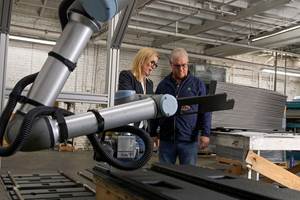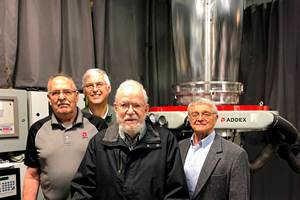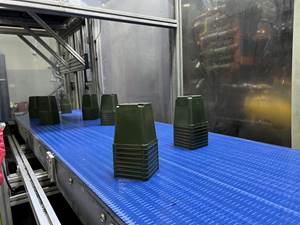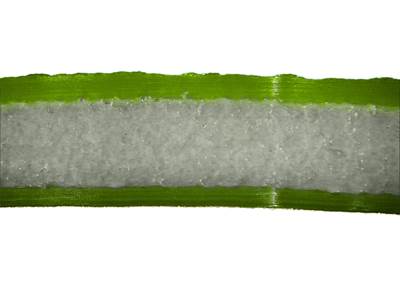Blow molders in the U.S. and Canada have two names to get familiar with. One is Plastiblow, an Italian company with 50 years’ experience in building blow molding machinery, and a pioneer in all-electric machines. The firm (plastiblow.it) has had some representation here in the past, but has not been active in North America for some years. Now it’s back, in a joint venture with Globeius, a new name for a well-established equipment business that is branching out in both product range and geography.
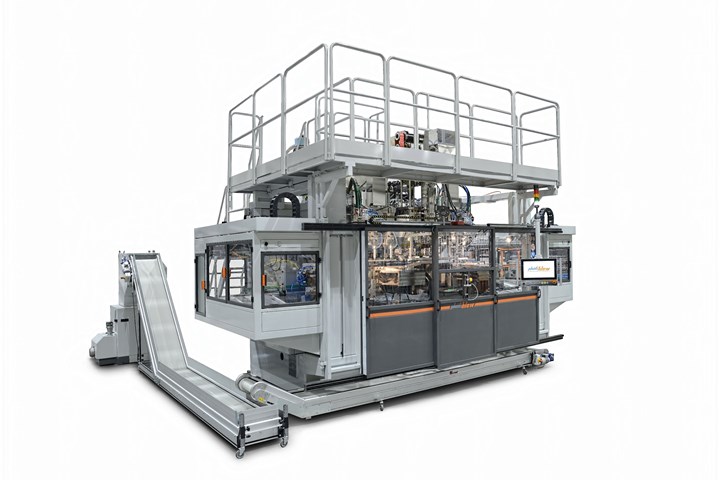
Plastiblow’s all-electric shuttle machines come in single- and double-sided models for containers from 10 ml to 30 liters. Machines are suited to automated takeoff of upright bottles. Shown here: a double-sided model PB22ED-700 configured for three-layer coextrusion.
Based near Miami, Fla., Globeius (globeius.com) is the name adopted last year by the former Plastics Solutions USA, Inc., to signify that it now serves three market areas: plastics, agriculture and general industrial. For plastics, it represents a variety of auxiliary equipment, components and MRO supplies (see sidebar).
Well established in Latin America, Plastiblow is making a new push in North America.
For the past 16 years, Plastics Solutions/Globeius was active mainly in Latin America, but is now seeking to raise its profile in North America and to branch out beyond its online-catalog sales model to include major capital equipment—namely, blow molding machinery, building on their experience representing Plastiblow in Mexico for over 10 years. Plastiblow has installed almost 300 machines in Latin America, including more than 40 in Mexico. In North America, Plastiblow has a small handful of older machines of 1990s vintage, and recently installed four presses in Canada and has several more on order for Mexico.
Parts & Service
According to Globeius general manager Graeme Sands, local spare-parts and service support are essential to successful marketing of major processing machinery. “We’re making a big push in those directions,” he says. Plastiblow spare parts are stocked in Florida and Mexico, and two full-time blow molding service technicians are located in Mexico but can travel to the U.S. Globeius is seeking another technician to be based here. The company also plans to have a machine available for demonstrations in Miami.
Globeius, known for online catalog sales, is expanding into major capital equipment through a joint venture with Plastiblow.
The Plastiblow line today consists entirely of all-electric, shuttle-type extrusion blow machines, both single- and double-sided, for making parts from 10 ml to 30 liters. Those machines have been furnished with up to 12 heads. One dual-sided machine in Canada has eight heads; the parts are tooled for bottom-to-bottom dual cavities and top-and-bottom blow—yielding a total of 32 cavities. Plastiblow has also supplied machines for up to six-layer coextrusion. The firm builds its own extrusion heads, but often uses heads from W. Müller, especially for multilayer applications.
High Efficiency & Sustainability
Plastiblow machines may not be familiar to most North American blow molders, but the brand has a number of factors in its favor, according to Frank Varuzza, sales manager in charge of Northern Europe and North America at company headquarters near Milan. He knows his competition, since he previously sold machines for two of them—Uniloy Milacron and Automa (now owned by Magic of Italy). First, they are less expensive than more familiar all-electric competitors, he says. But more important is their superior price/performance ratio. By that he means 90% to 95% efficiency, or OEE (overall equipment effectiveness).
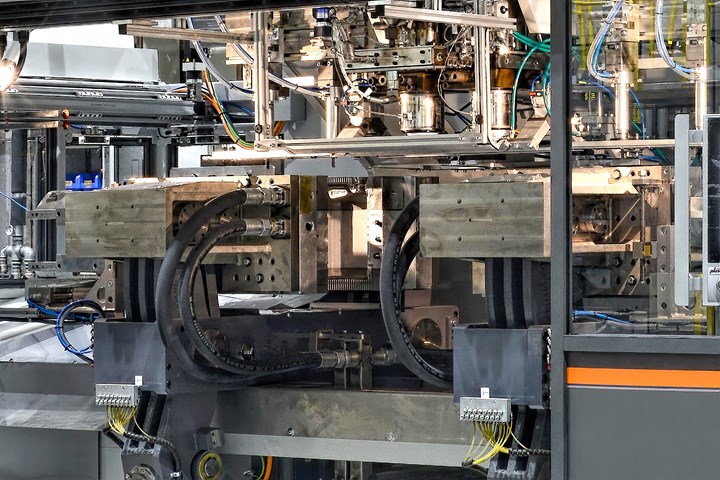
Plastiblow machines boast a highly efficient clamp that requires a relatively small servomotor, as well as real-time readout of actual clamp force and ability to dial it down to just as much force as the job requires.
One element of that efficiency is low energy consumption. Plastiblow’s toggle-clamp design is “one of the best in the blow molding industry,” he explains, which requires very small motors to generate high closing force. For example, a 30-ton clamp on a Plastiblow machine requires only a 5-kw (6.7-hp) servomotor, whereas some competing machines require as much as 30 kw (40 hp) for the same size clamp, Varuzza says.
He adds that Plastiblow machines offer a real-time display of actual clamp tonnage and the ability to dial it down to just the amount required by the particular mold—a feature he says is unusual in hydraulic machines.
Other notable features include a servomotor on each blow pin to fine-tune the stroke to cut the neck flash. It’s not necessary to stop the machine to adjust the neck calibration, he points out. In addition, the extrusion head has a servomotor for die-gap adjustment of each parison—which comes in handy when adjusting parison thickness for the variability in recycled materials, Varuzza notes.
He adds that these tiebarless machines allow easy access to the clamp for mold changes. A trolley is available to assist in this operation, as well as a control pendant to jog the clamp open or closed and moving the shuttle during mold setup.
One of the pioneers of all-electric blow molding, Plastiblow claims outstanding energy efficiency, uptime efficiency, and user-friendly controls.
Varuzza says his machines’ controls—the hardware comes from B&R Industrial Automation in Austria, the software from Plastiblow—are “Industry 4.0-ready” and incorporate the OPC-UA communication protocol.
He also notes that his company has ample experience with automation of bottle takeoff, which is much more common in Europe than here. “With all our machines, the bottles come out upright and ready for packaging.” As noted in the sidebar, Globeius also represents Crizaf for belt conveyors to deliver bottles to packing stations. Plastiblow can also supply automated leak testing and bottle weighing as part of the takeoff system.
Overall user-friendliness is another characteristic claimed for these machines. Varuzza notes that during the past year, several customers were readily able to install new machines on their own without on-site assistance, owing to travel restrictions imposed by the COVID-19 pandemic.
Apart from these attractions, Varuzza points to sustainability as a key emphasis for his company and its machines. One factor is energy savings from all-electric operation. The measure of that, he says, is the figure of 0.28 kWh/kg of resin processed on Plastiblow machines, which reportedly compares with a minimum of 0.40 kWh/kg for newer hydraulic machines.
That 30% ballpark savings in energy is far from the whole story. Electric machines also promote a cleaner and healthier workplace, with no oil spills or leaks on the floor and much lower noise levels. Cleanliness of electric machine is also attractive to customers for food and medical packaging. And there’s less time to get a machine up and running properly from a cold start, because there’s no need to wait for the hydraulic oil to warm up to equilibrium.
A second element of sustainability is suitability of these machines for lightweighting bottles. Thinner walls require greater repeatability of weight distribution, notes Varuzza, which is facilitated by a patented servo die-gap control on each head, as noted above.
The third element of sustainability cited by Varuzza is ability to use post-consumer or post-industrial reclaim, whether in a monolayer or coextruded structure. “Our standard extruders are equipped with a wear-resistant coating to run PCR,” he notes. In Europe, one customer blows 10- and 20-liter containers and has arranged to take back the empties for recycling into fresh containers.
Related Content
Cobot Creates 'Cell Manufacturing Dream' for Thermoformer
Kal Plastics deploys Universal Robot trimming cobot for a fraction of the cost and lead time of a CNC machine, cuts trimming time nearly in half and reduces late shipments to under 1% — all while improving employee safety and growth opportunities.
Read MoreAir Ring Add-On Brings Output to New Level
The Short Stack from Addex sits between the air ring and die and provides high-velocity air flow to boost output and lock in the bubble.
Read MoreProcessor Turns to AI to Help Keep Machines Humming
At captive processor McConkey, a new generation of artificial intelligence models, highlighted by ChatGPT, is helping it wade through the shortage of skilled labor and keep its production lines churning out good parts.
Read MoreWisconsin Firms Unite in Battle Against Covid
Teel Plastics opened new plant in record time, partnering with AEC & Aqua Poly Equipment Co. to expand production of swab sticks to fight pandemic.
Read MoreRead Next
Blow Molding: Something for Everyone at K Show
Packaging, industrial, continuous-extrusion, accumulator-head, injection-blow, stretch-blow, EPET, foam, sandwich co-injection—the blow molding news was wide ranging at K 2019.
Read MoreUnderstanding Melting in Single-Screw Extruders
You can better visualize the melting process by “flipping” the observation point so that the barrel appears to be turning clockwise around a stationary screw.
Read MoreWhy (and What) You Need to Dry
Other than polyolefins, almost every other polymer exhibits some level of polarity and therefore can absorb a certain amount of moisture from the atmosphere. Here’s a look at some of these materials, and what needs to be done to dry them.
Read More


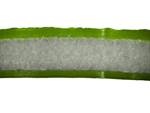





.png;maxWidth=300;quality=90)















